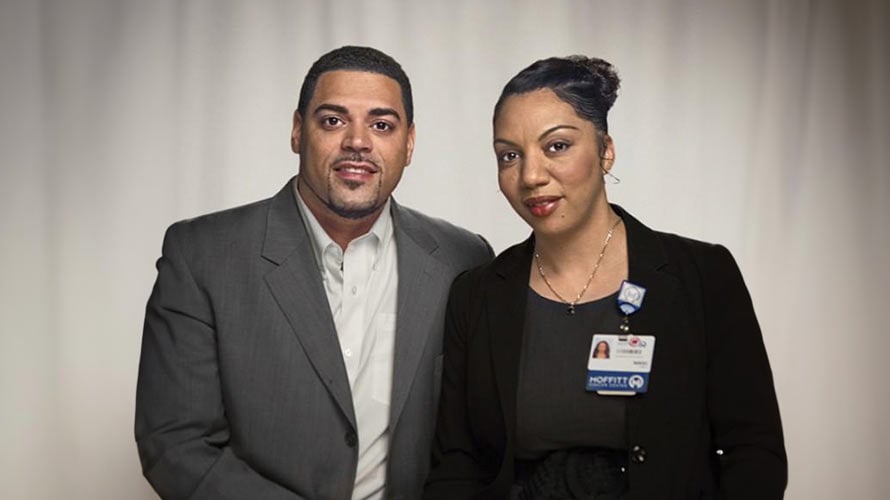Sarcoma Overview
Sarcoma is a diverse group of rare cancers that originate in cells that support and connect various tissues throughout the body. It is broadly classified into two main types: bone cancers, such as osteosarcoma and Ewing’s sarcoma, and soft tissue cancers, such as leiomyosarcoma and liposarcoma. With that said, there are more than 70 subtypes of sarcoma, each with its own unique characteristics and symptoms.
While sarcoma can develop virtually anywhere in the body, it is most commonly found in the arms, legs and area behind the abdominal cavity (retroperitoneum). On the whole, it constitutes about 1% of adult cancers and 15% of childhood cancers.
Sarcoma causes
Experts believe sarcoma likely results from a complex interplay of certain genetic and environmental factors, which leads to uncontrolled cell growth in connective tissues and results in the formation of a tumor. However, most sarcoma cases occur sporadically with no known cause.
Sarcoma risk factors
The risk factors for sarcoma include:
- Inherited gene mutations and cancer predisposition syndromes, such as Li-Fraumeni syndrome and neurofibromatosis type 1
- Exposure to ionizing radiation from cancer treatment or environmental sources
- Exposure to certain herbicides or other toxic chemicals
Age, gender and race may also contribute to the development of specific subtypes of sarcoma. Although the majority of cases occur for unknown reasons, it is still important to understand and recognize the risk factors. Regular medical check-ups and prompt attention to any concerning symptoms can lead to early detection and proactive sarcoma management.

Sarcoma symptoms
The signs of sarcoma can vary based on the type and location of the tumor. General symptoms can include:
- A lump – Swelling or a painless mass that can be felt in soft tissue or bone
- Worsening discomfort – Pain in the affected area that gradually worsens as the tumor grows
- Reduced range of motion – Difficulty moving a joint or limb
- Fatigue – Unexplained tiredness, lethargy or weakness
- Broken bones – Unexplained fractures due to weakened bones
- Gastrointestinal symptoms – Abdominal pain, bloating, reduced appetite, indigestion and unintended weight loss
- Neurological symptoms – Muscle weakness, numbness and tingling sensations
Bone sarcomas typically present with pain. Soft tissue sarcoma is typically painless when it starts and patients will often only develop symptoms once the tumor has reached a critical size or starts affecting other nearby structures like nerves, blood vessels or bones.
Sarcoma diagnostic testing
Typically, the diagnostic process for sarcoma involves:
- A health history review and physical examination – After gathering information about the patient’s personal and family medical history, including any relevant symptoms and risk factors, the physician will perform a thorough physical exam to check for lumps, swelling and other abnormalities.
- Imaging studies – To visualize a suspected tumor and assess its location, size and extent, the physician may order one or more imaging tests, such as X-rays, computed tomography (CT) scans, magnetic resonance imaging (MRI) scans and positron emission tomography (PET) scans.
- Biopsy – A crucial step for confirming a diagnosis of sarcoma, a biopsy involves obtaining a small sample of tissue through a needle or during a surgical procedure for microscopic evaluation by a pathologist.
- Histological examination – The pathologist will complete a detailed histological examination of the biopsy specimen to identify the type of cells (cancerous or benign) and, if sarcoma is present, determine its type.
- Genetic testing – If a hereditary link is suspected or additional information is needed to plan treatment, the physician may order genetic testing to check for specific genetic mutations or alterations.
- Staging – If a diagnosis of sarcoma is confirmed, the physician may order further testing to stage of the tumor and determine how far it has spread within the body.
Sarcoma treatment
The optimal treatment approach for sarcoma can vary depending on its specific subtype, the location and size of the tumor and the patient’s overall health. Some options include:
- Surgery – Surgical removal of the tumor is a common treatment approach, especially for a localized tumor that can be removed in its entirety with minimal disruption to nearby structures.
- Chemotherapy – After being administered intravenously or orally, powerful cancer-fighting drugs enter the bloodstream and circulate throughout the body to target and destroy widespread cancer cells.
- Radiation therapy – High-energy beams are precisely aimed at the tumor to destroy the cancerous cells.
- Targeted therapy – Special drugs are designed to specifically target certain molecules or pathways involved in the growth of the cancer cells.
- Immunotherapy – Medications stimulate the body’s immune system, helping it to recognize and attack cancerous cells.
- Clinical trials – As scientists evaluate the effectiveness of breakthrough therapies compared to the current standard of care, patients can benefit from these promising new options.
Frequently asked questions (FAQs) about sarcoma
The following FAQs-related articles provide additional information about sarcoma:
- Questions to ask your sarcoma specialist
- When should I see a sarcoma specialist?
- What is a soft tissue sarcoma?
- What are the different types of sarcoma?
- How long after diagnosis should I be treated for sarcoma?
- What are the most common sarcoma symptoms?
- Am I at risk for developing sarcoma?
- What are the most common types of sarcoma?
- What causes sarcoma in adults?
- Where can sarcoma spread to?
- What is osteosarcoma of the jaw?
Benefit from world-class care at Moffitt Cancer Center
Moffitt’s renowned Sarcoma Program is home to a multispecialty team of medical oncologists, radiologists, pathologists, radiation oncologists, surgeons, registered nurses and other medical professionals who are dedicated to providing our patients with highly advanced, individualized care. As a National Cancer Institute-designated Comprehensive Cancer Center, Moffitt is nationally recognized for performing groundbreaking research and clinical trials, which provide our patients with access to innovative treatments that are not yet available elsewhere.
Medically reviewed by Alexander Lazarides, MD, surgeon, Sarcoma Program.
You can request an appointment with a specialist in our Sarcoma Program by calling 1-888-663-3488 or submitting a new patient registration form online. We do not require referrals.



